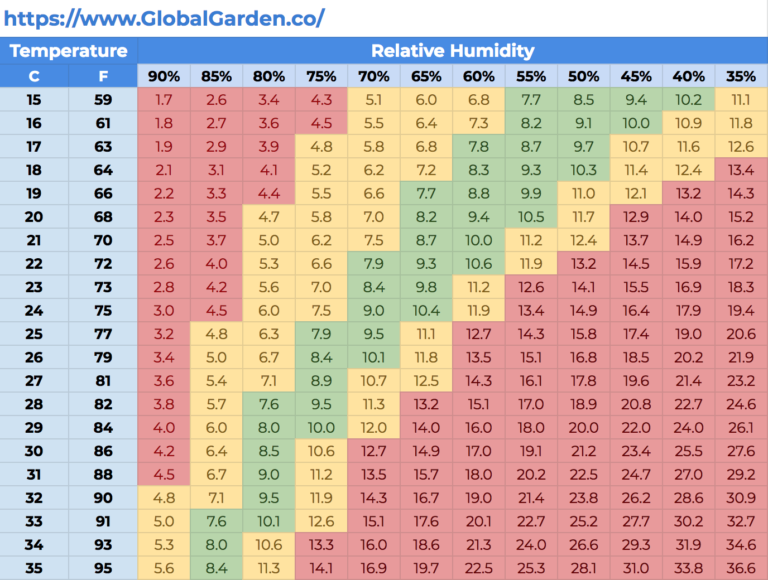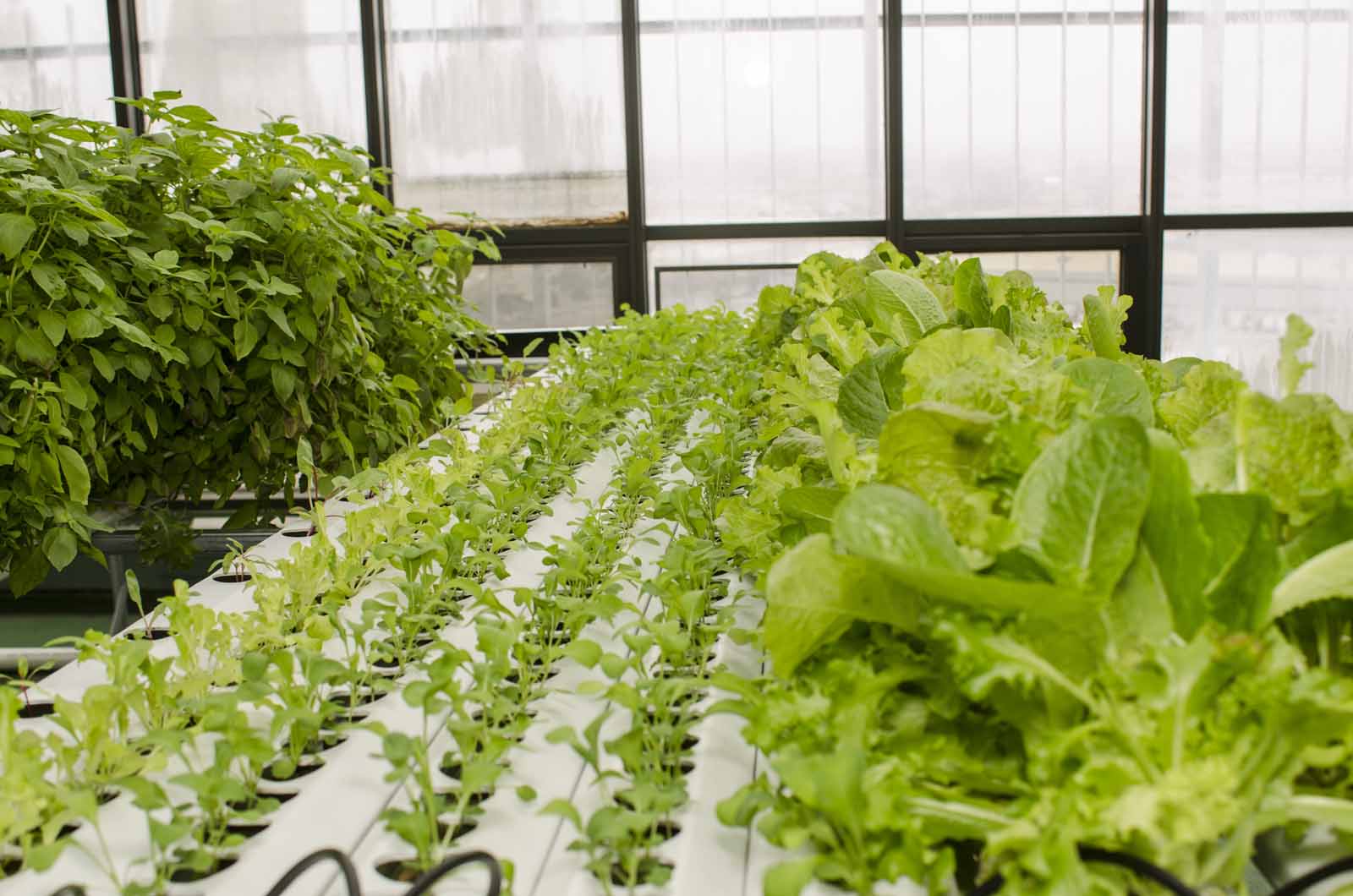Growing plants indoors can be challenging, so we’ve written an article on how to increase yield in these conditions. It’s important to note that growing indoors differs in a few ways from growing outdoors. Indoor environments offer opportunities for better control. Therefore, when growers properly control their environment, they experience high yields.
Some tips for a successful indoor grow include:
- Create the best grow setup for yield
- Optimize plant feeding and watering
- Choose the best strain
- Prune plants for optimal growth
Now that you know some tips, let’s dive into them.
1. Create the Best Grow Setup for Yield
If you’re wondering how to increase yield, one of the most important aspects is your grow setup. If you want healthy plant growth, you must optimize your setup and environment. A low-quality environment will stunt the growth of your plants. Poor environmental conditions can also lead to problems like powdery mildew and insect pests.
Lighting
As you probably know, plants utilize light to complete photosynthesis. Therefore, proper lighting is essential for healthy plant growth and high yields. If you want to learn how to increase yield, you need to learn about choosing proper lighting.
What makes it tricky is that there’s not one correct type of lighting. The right light for you depends on the size of your operation, your budget, and other factors. To help you decide what’s best for you, learn more about HID vs LED lights and CMH vs LED lights.
Best Light for Flowering
As mentioned above, the best light for you depends on your growing operation. No matter which type of light you choose, pay attention to the light’s color/temperature.
Plants require a large portion of blue light in the vegetative stage. When they enter the flowering stage, they require more red light. In other words, warm lights are the best type of lights for the flowering stage of plants.
Monitor VPD Values
One of the most important steps to get the best yields possible is to manage plant vapor pressure deficit (VPD) throughout the plant’s life cycle.
VPD is a number that indicates how much the water inside the leaf of your plant wants to come out into the air. A higher VPD value means more water will be drawn into the atmosphere from the plant, and that means the plant will dry out more quickly.
This is an important value that determines how comfortable your plants are during their different growing stages. VPD is regulated by adjusting the air temperature, leaf temperature, and the relative humidity in your grow room.
To start, measure the temperature and relative humidity of the room. Next, look at the VPD chart. Your goal is the be in the green on the chart. So, adjust the relative humidity and/or temperature to get in the optimal range.
It’s important to note that the plant’s VPD can be different than the room VPD. To calculate the plant VPD, measure the leaf temperature.
Another thing to keep in mind is your plants perform best with different VPD values during different parts of their life cycle. You’ll have to continually monitor and adjust the VPD.
Target Temperature and Relative Humidity Based on Plant Stage
Like we mentioned above, the optimal temperature and humidity vary depending on the stage of the plant’s life cycle. If you’re interested in learning how to increase yield, check out our general guidelines. However, remember optimal numbers can vary based on strain.
| Clone Stage / Small Plants | Veg Stage / Medium Plants | Bloom Stage / Large Plants |
| 77° F (25° C) | 75° F (24° C) | 75° F (24° C) |
| 80% RH | 70% RH | 50% RH |
By keeping the temperature around 75° F (24°C) and gradually adjusting your humidity levels downward as your plant ages, you’ll help keep it within healthy VPD levels. This will help you achieve maximum growth. If it’s much hotter or cooler than 75° F (24°C), and you can’t precisely control the temperature, you’ll want to adjust the humidity accordingly.
Remember, these factors are practically impossible to regulate when growing outdoors. But indoors, you can optimize them and therefor optimize plant yields.
How to Make Adjustments
Adjusting the temperature can be done by adding heat, removing heat, or controlling the lights. Adjusting the humidity is done by using dehumidifiers or humidifiers.
Optimize the Room Using the DimLux Maxi Controller
As outlined above, maintaining optimal temperatures and humidity levels is essential during the various stages of plant growth. Therefore, consider investing in a tool like the DimLux Maxi Controller along with air conditioners, ventilation, dehumidifiers, and/or humidifiers.
The Maxi Controller can take care of a lot of the calculations for you. This controller has add ons including the DimLux plant temperature camera, temperature sensor, and humidity sensor. These allow the Maxi Controller to effectively monitor leaf temperature (a key factor in VPD values) as well as room temperature and humidity levels.
By using these measurements, the controller can adjust lighting, dehumidifiers, heating, cooling, etc.
It’s a really powerful tool and one of the simplest ways to automate an indoor grow. The maxi controller data logger will even give you the VPD values and log them on a data stick, so you know the VPD throughout the entire grow! You can analyze the details to learn how to increase yield in the future.
Quick Reference VPD Chart
This will tell you the Vapor Pressure Deficit of the room only, and it’s a good starting point. Remember, if the leaf temperature is much cooler than the room temperature, it means the plant itself is experiencing a different VPD.

2. Optimize Plant Feeding and Watering
You probably know that plants require nutrients and water to grow. But you might not know how to optimize the amount of nutrients and water that plants receive.
Water Effectively
Watering your plants properly involves care observation. If you water set on a strict schedule, you risk overwatering or underwatering your plants.
To determine how much to water, you must take into account the size of your plant, the temperature and humidity of your grow room, and the growing media. Check the growing media. It should feel moist, but not damp. If it is damp and water is puddling, you are overwatering. If the media is dry and/or crumbly, you are underwatering.
When watering your plants, you want to add enough water so that the media is moist, but water is not standing on the surface. The water should evenly seep down into the soil without remaining on top.
For more consistent watering, you might want to consider investing in a drip irrigation system. You can connect this system to a timer, so all the plants get watered on a schedule. With this setup, you still have to carefully monitor soil or media moisture levels and adjust the amount and frequency you water. We recommend small drip lines, with ⅛” inner diameters. These evenly distribute water in the media, and they’re easily controlled by a timer.
Supply the Proper Plant Nutrients
Providing essential plant nutrients is necessary for healthy plants and high yields. Even if you apply the necessary amounts of macronutrients, a lack of other nutrients might be limiting plant growth.
When selecting nutrients, you can opt for organic or conventional nutrients. No matter what you choose, make sure you apply the recommended dose. To determine this, test your growing media for its nutrient content. If you’re growing hydroponically or in sterile media, follow nutrient feeding charts.
Take note of any abnormalities with your plants. These can be signs of nutrient deficiencies. If you are applying a lot of fertilizer, they can also be signs of nutrient burns.
Best Nutrients – Bud Growth
Buds are one of the most important factors in determining your yield. Therefore, it’s important to choose the best nutrients for bud growth.
Since plants’ needs vary throughout their life cycle, make sure to adjust your nutrient applications based on the stage of your plants’ growth. Plants require different amounts of nutrients during different stages of growth. For example, they require more nitrogen during the vegetative stage than during the flowering stage.
Fortunately, there are products available for different stages of plant growth. Products such as BioGrow are great for the vegetative stage of plant growth, while products such as BioBloom are suited for the flowering stage.
What Week of Flowering Do Buds Grow the Most?
Speaking of buds, you might be wondering when buds grow the most. If you apply the proper nutrition and increase the amount of K, P, Mg, and Ca during flowering, you’ll notice the most growth in weeks 4-8 of flowering.
3. Choose the Best Strain
If you’re trying to achieve optimum yields, it’s vital that you invest in a plant strain that is suited to your growing environment. Look for varieties that have high disease tolerance, increased vigor, and high yields.
If you’re having trouble producing high yields, but your growing environment and practices are spot on, try another strain.
4. Prune Plants for Maximum Growth
To answer the question of how to increase yield, you must learn about pruning. Proper pruning can help achieve optimal health and maximum growth. Allow your plants to grow until they begin to look a bit bushy. When plants have four to eight nodes, it’s time to start pruning.
When pruning, take care to maintain an even canopy for even light distribution. You want sunlight to hit as much of your plant as possible. This helps produce even growth.
Depending on the type of light, grow lights typically penetrate only 6 to 24 inches. So, carefully prune any low-lying branches and leaves that are deeply shaded. These leaves won’t grow, but they will use energy that could be directed to the upper canopy. Also, try and remove any potential bud sites lower down on the plant’s stalks. The energy required for these buds’ growth is better focused on the biggest and best flowering sites.
The goal of pruning is to achieve good canopy distribution and open your plant up to direct sunlight. If you can achieve these two things, you’re headed toward excellent yields.
It’s also important to stop pruning your plants once they’re a week or two into the flowering stage. By focusing your pruning efforts on shaping your plants during the vegetative stage, you’re sure to get an impressive yield in the end.
When to Top Your Plants
Another important part of pruning is topping your plants. This process involves removing the apical bud, aka top, of your plant. By topping, you encourage lateral growth, leading to bigger yields.
It’s best to top your plant when it has 6-8 nodes. If you top your plant when it has fewer nodes, it might not recover from the pruning.
How to Get Big Yields Indoors
It’s every producer’s dream to grow plants yield large, healthy harvests. By following our advice, you’re on your way to becoming a much better grower.
As a refresher, the four tips are:
- Create the Best Grow Setup for Yield
- Optimize plant feeding and watering
- Choose the best strain
- Prune plants for optimal growth
Following these tips and you’ll be rewarded with large yields.
References
A Closer Look at the Calvin Cycle
Vapor Pressure Deficit Vs. Relative Humidity for Your Marijuana Grow Room
